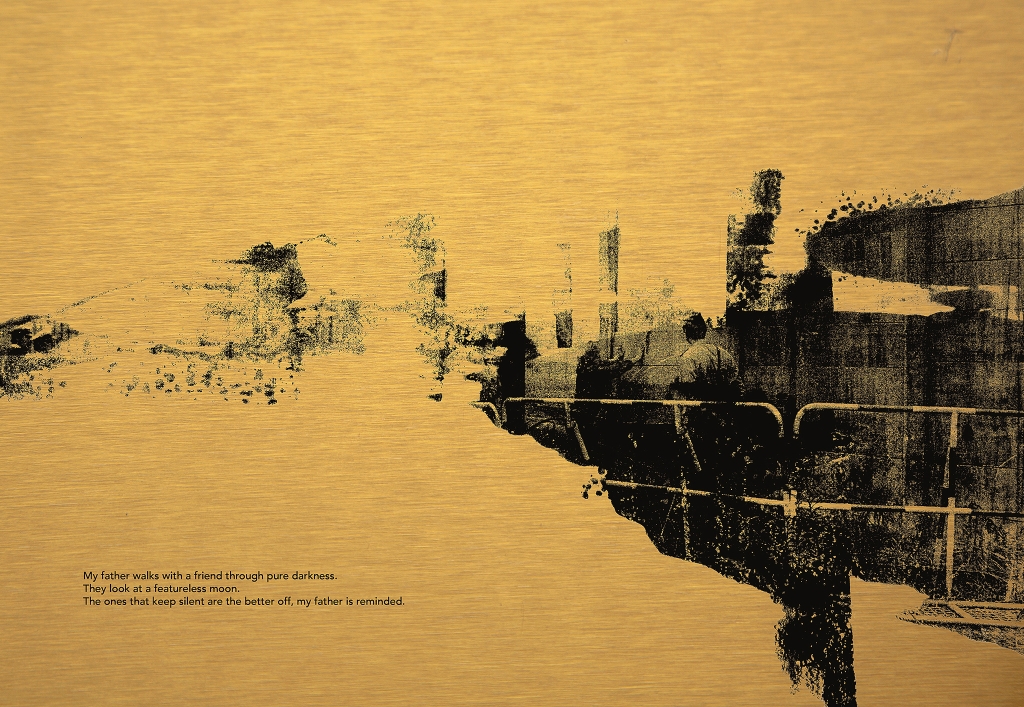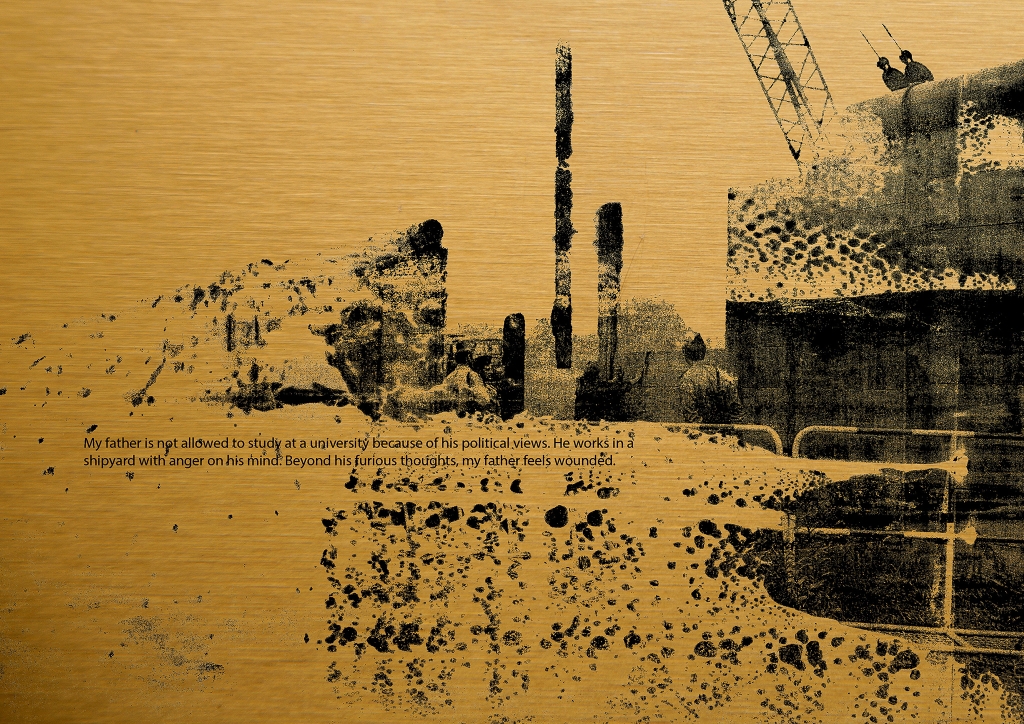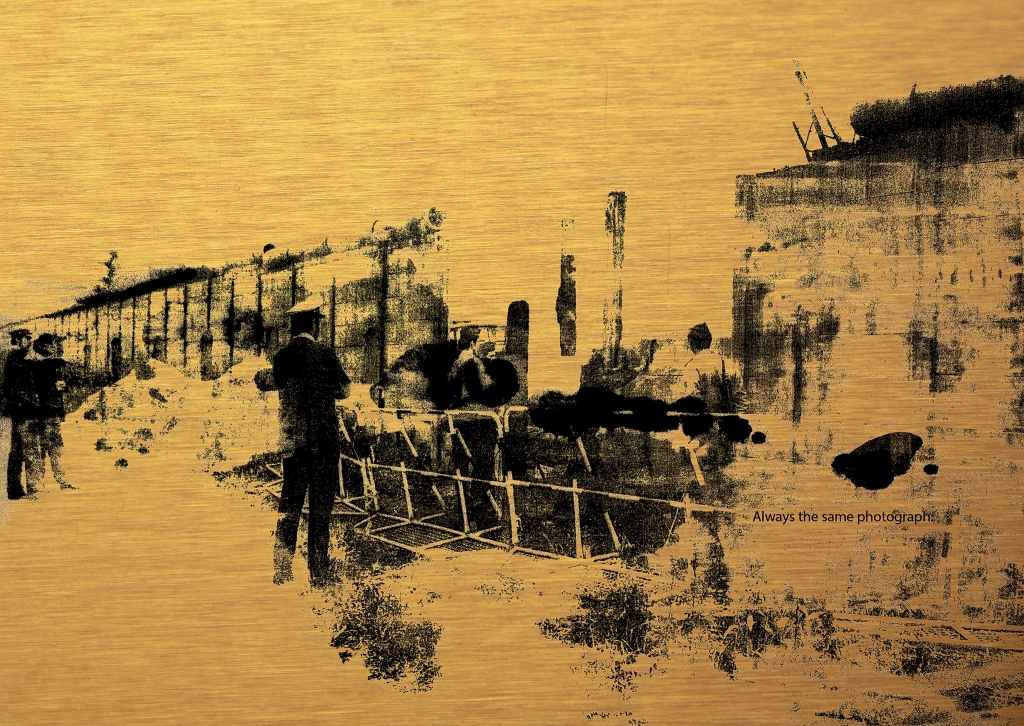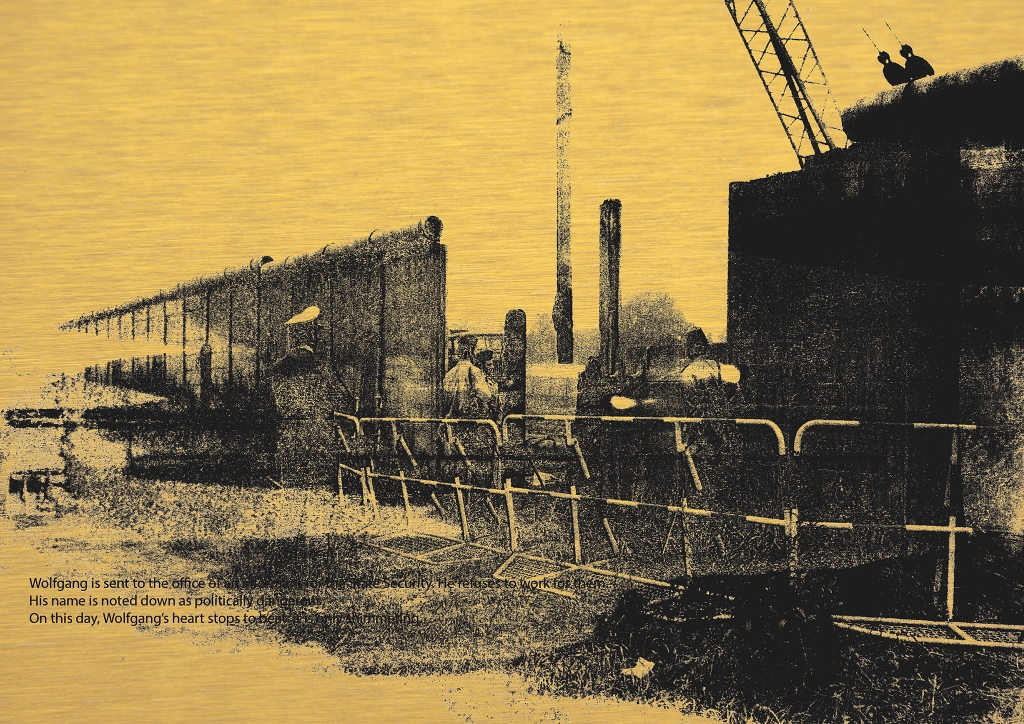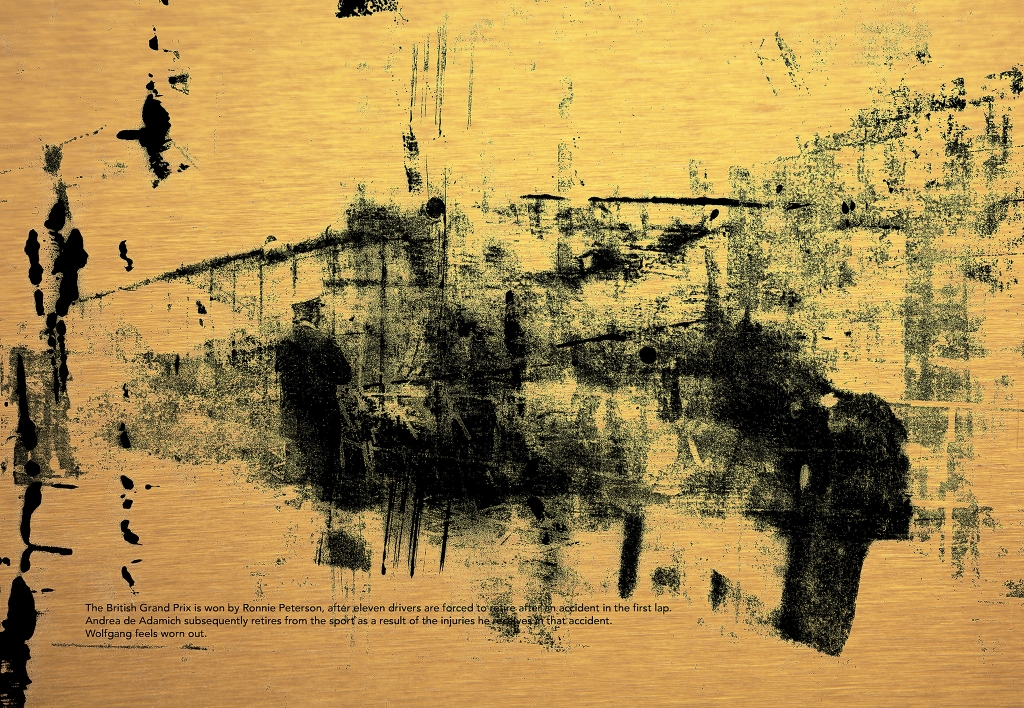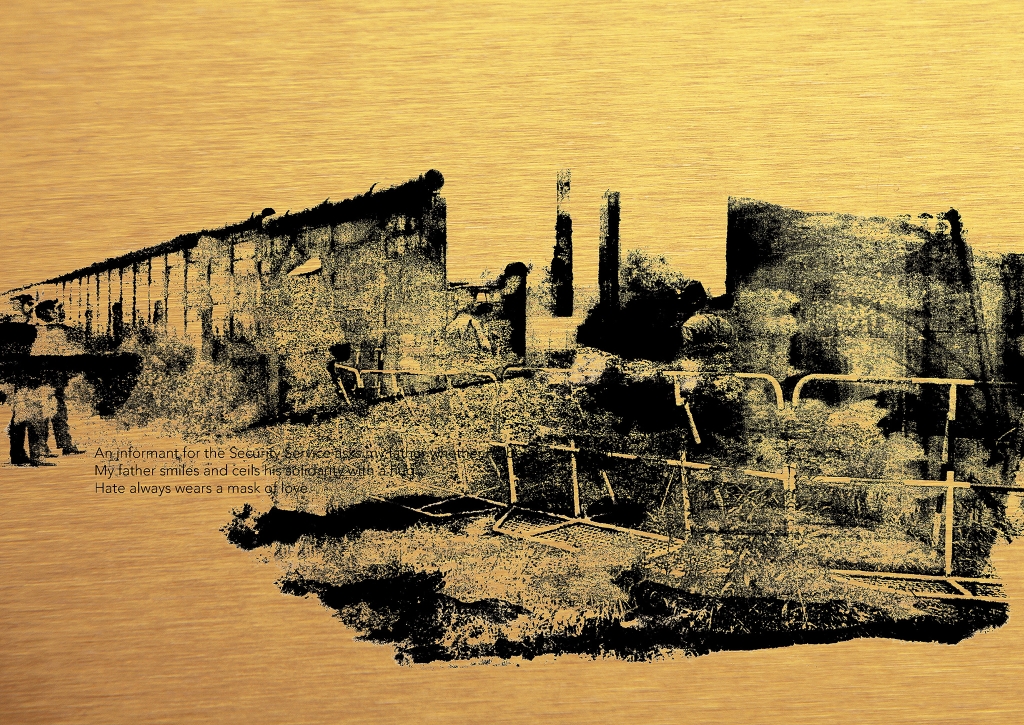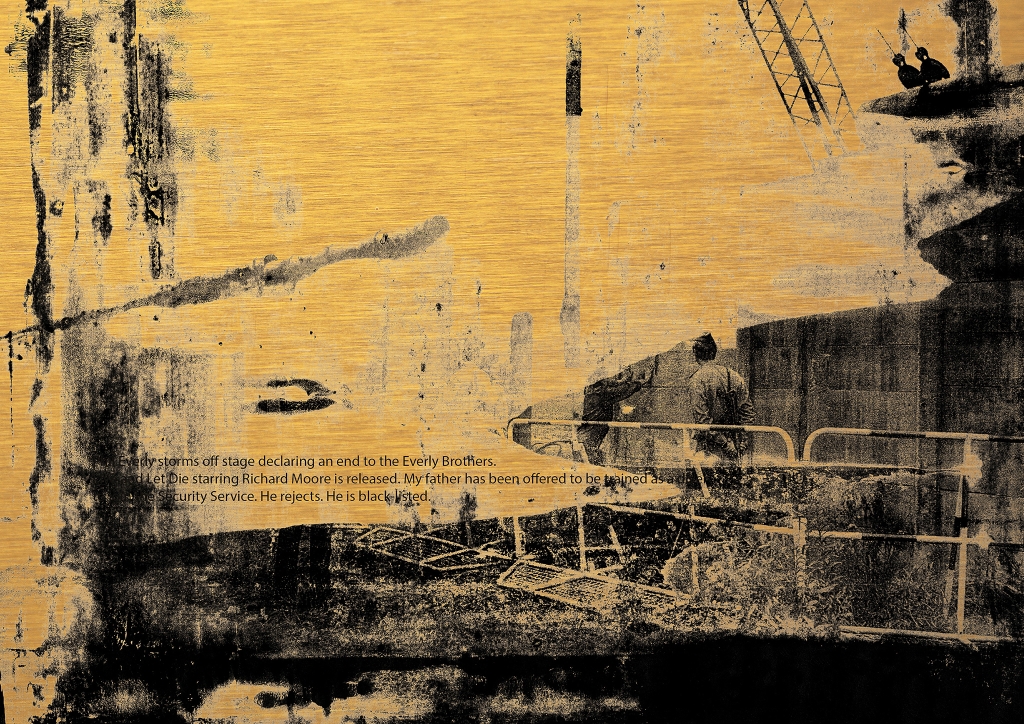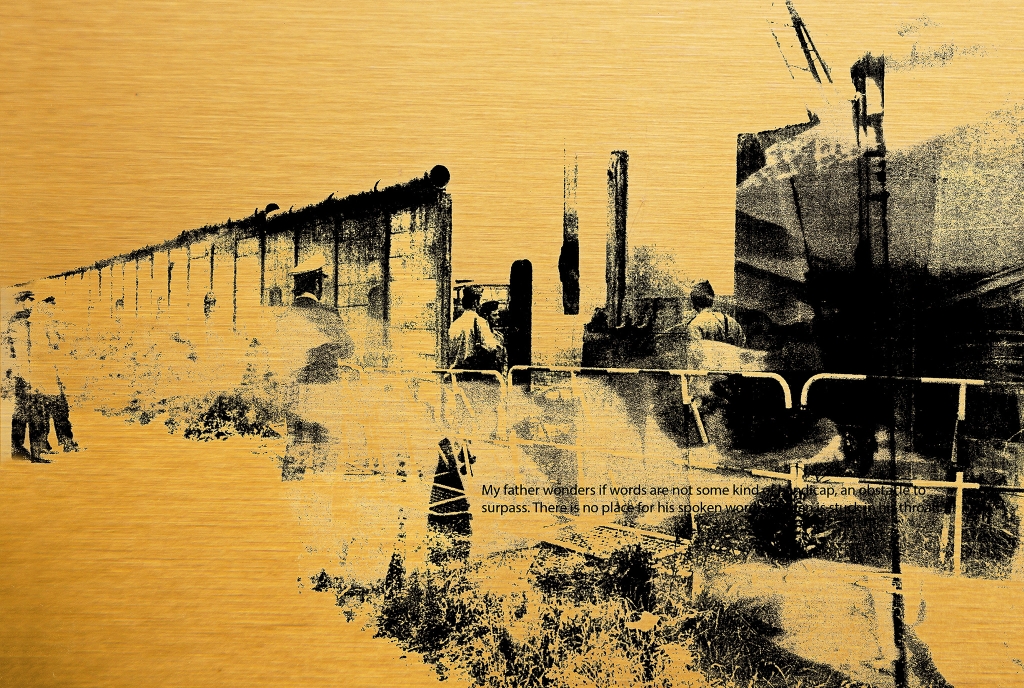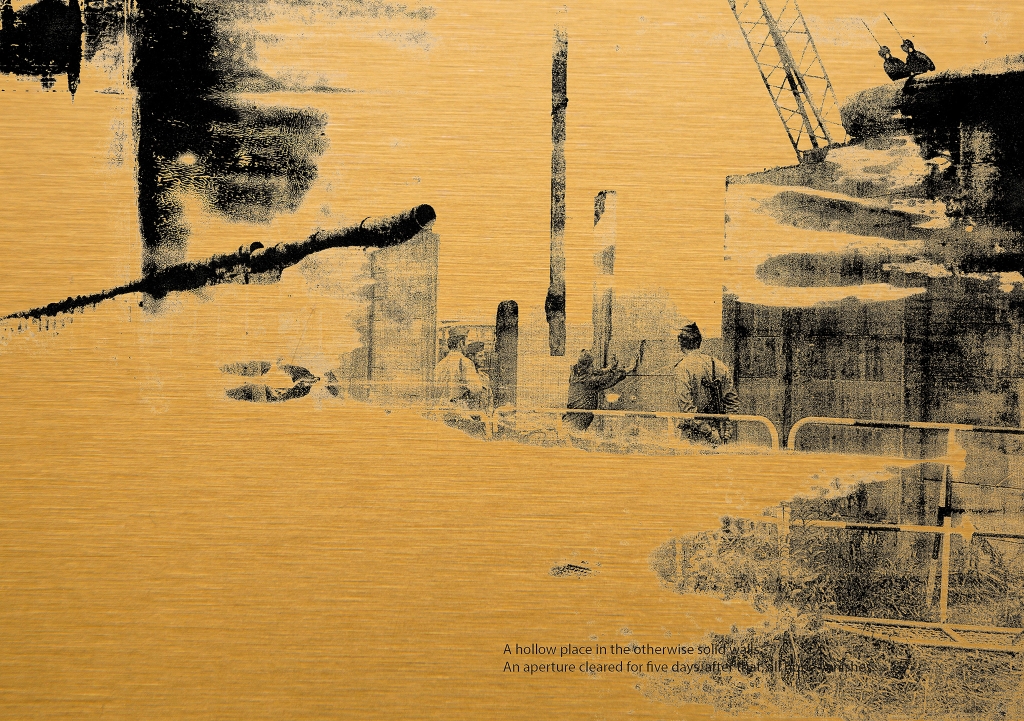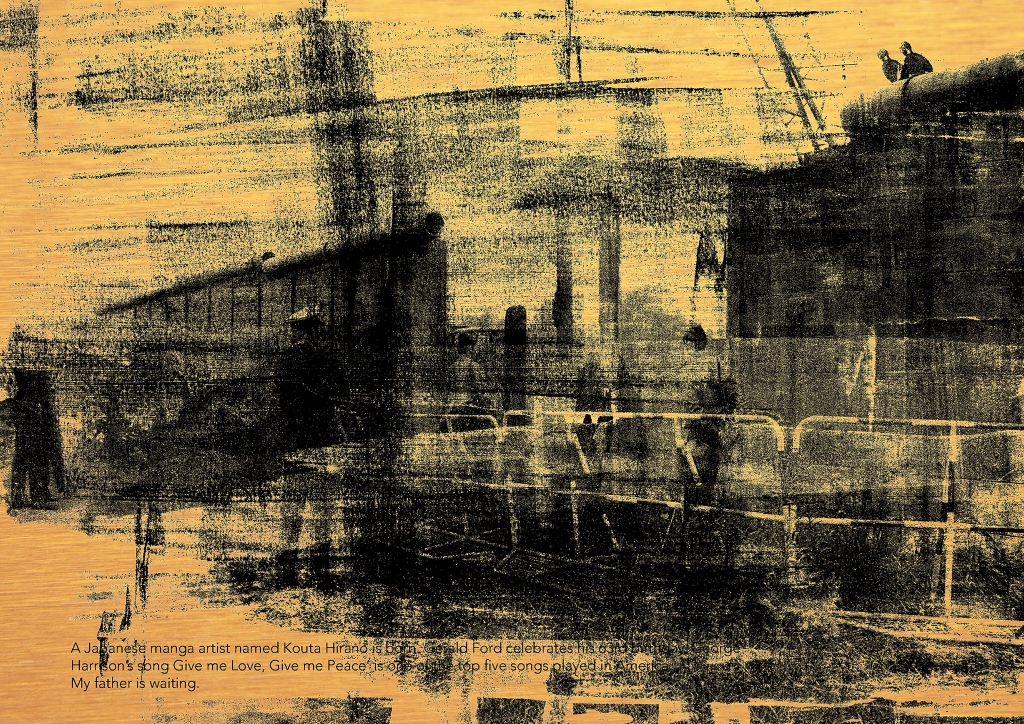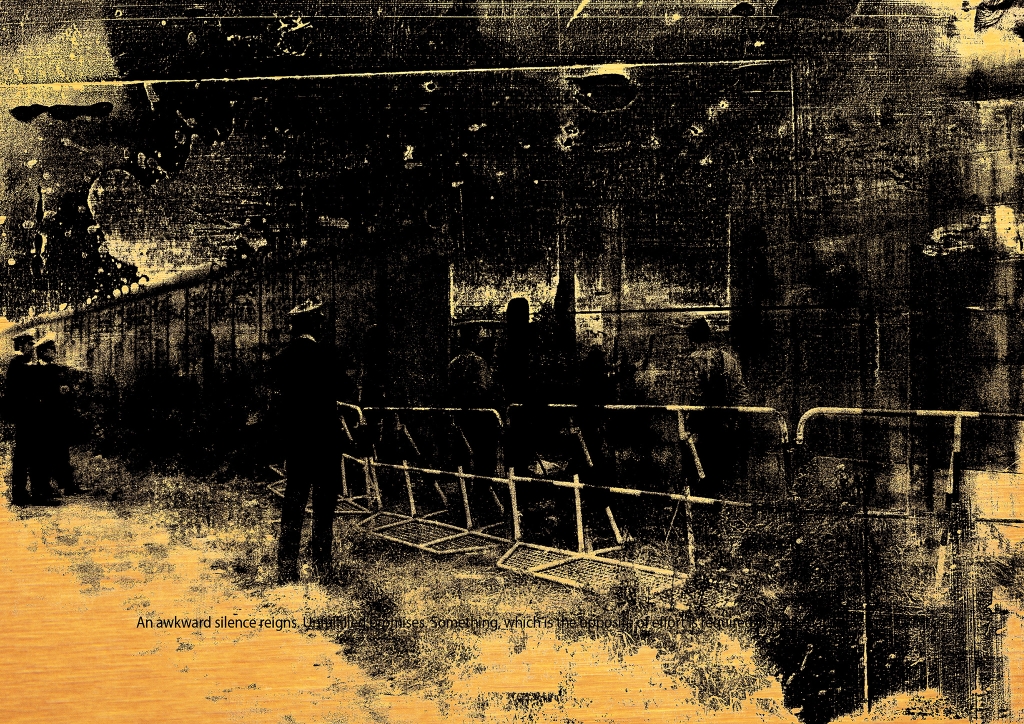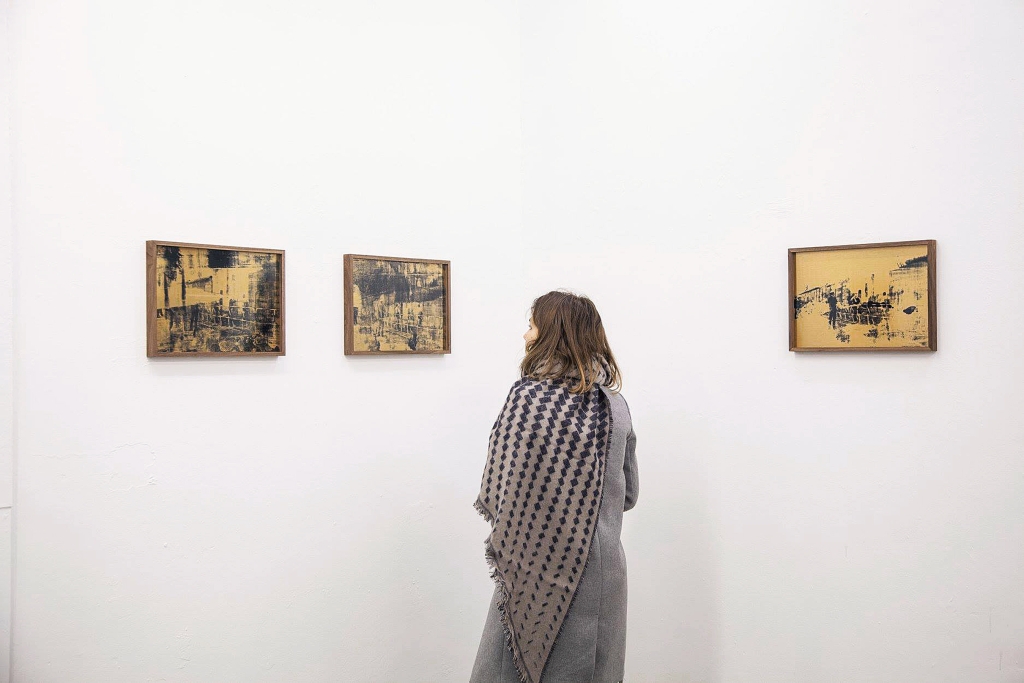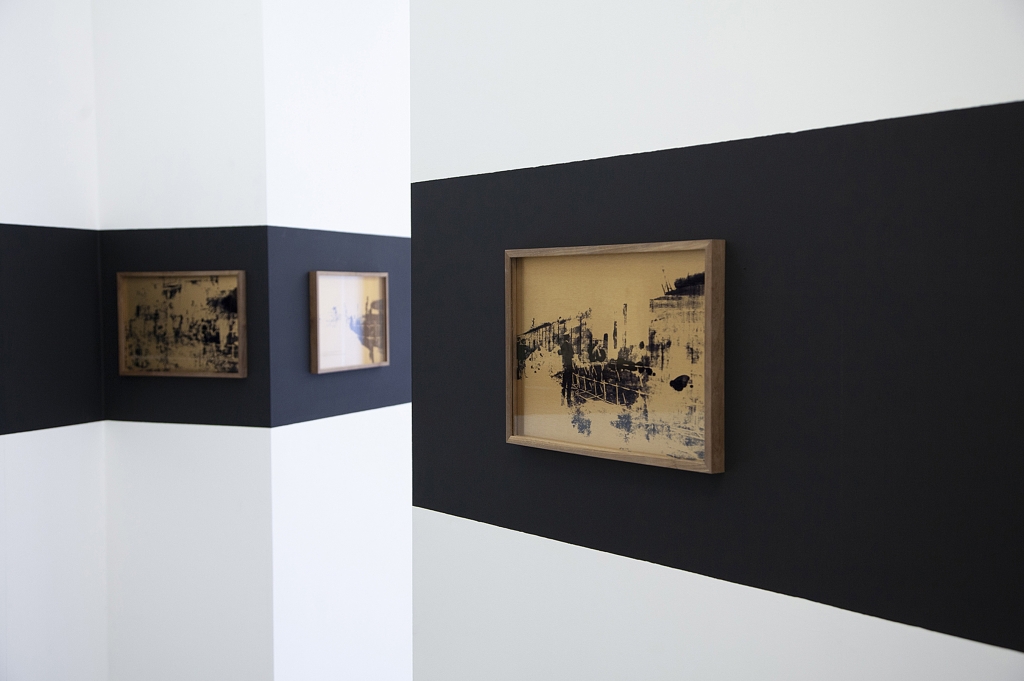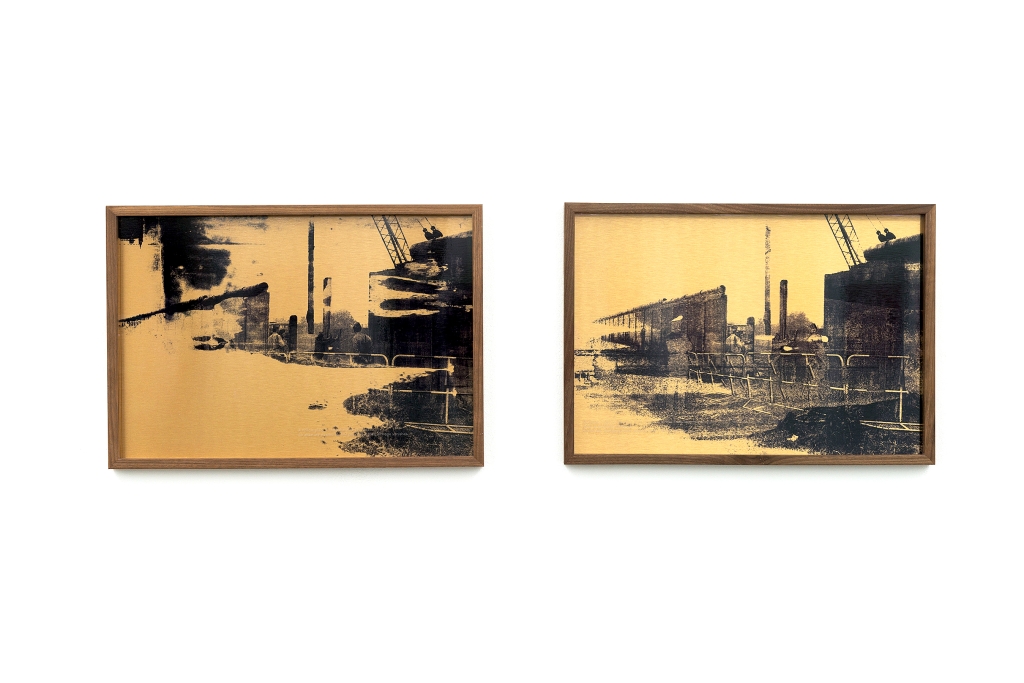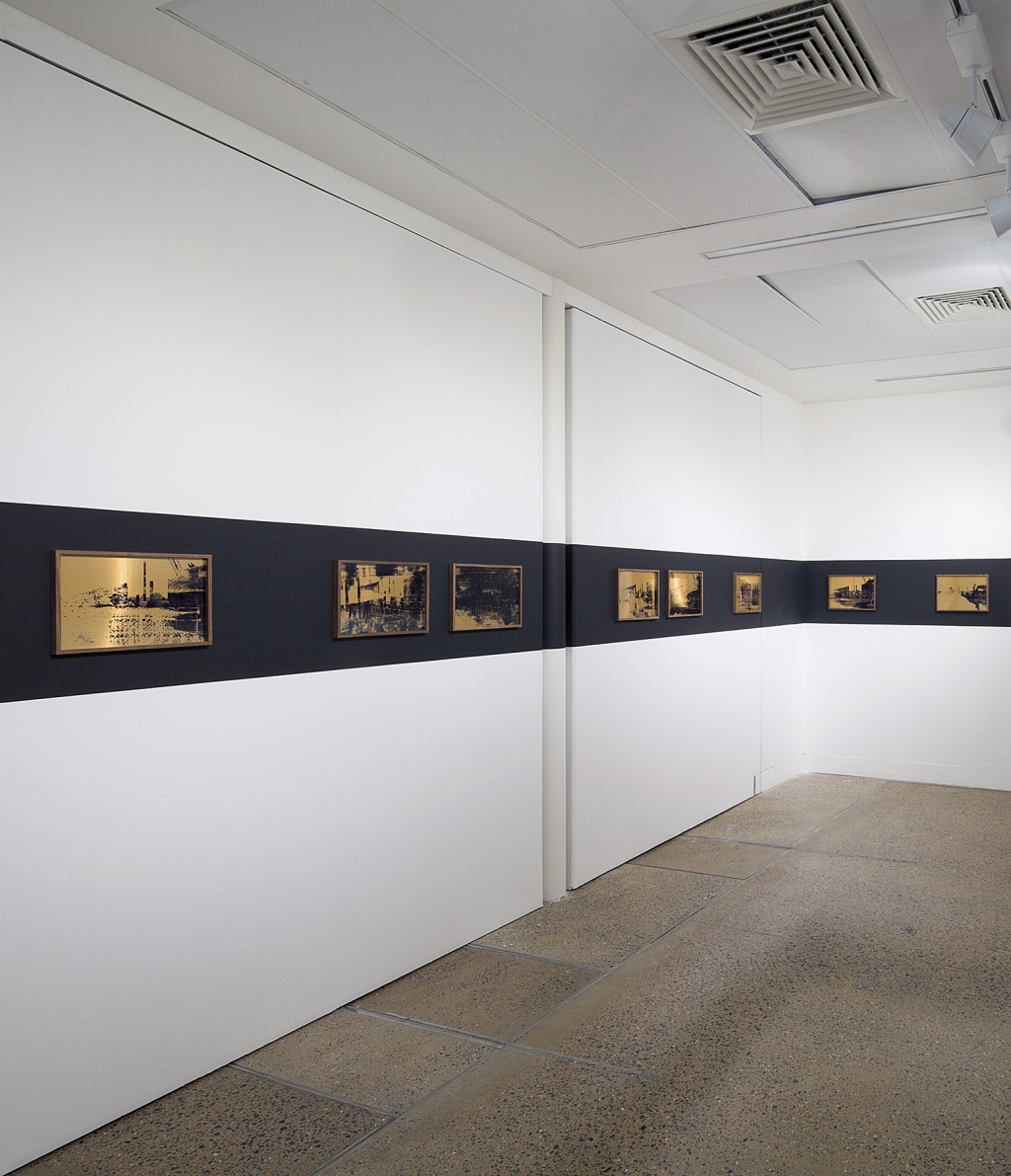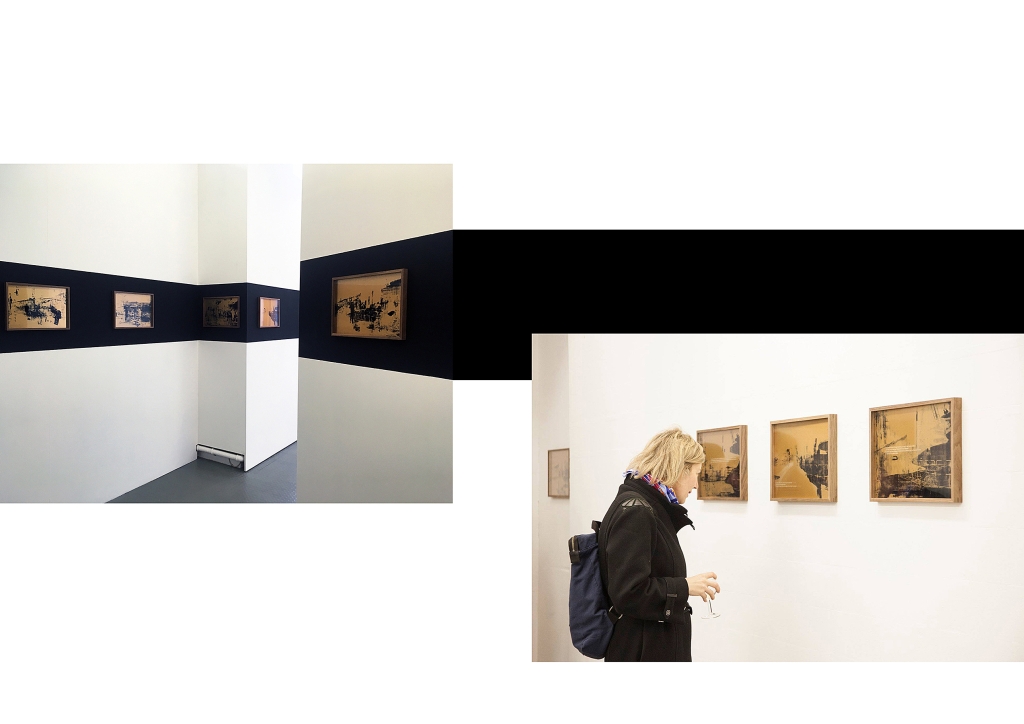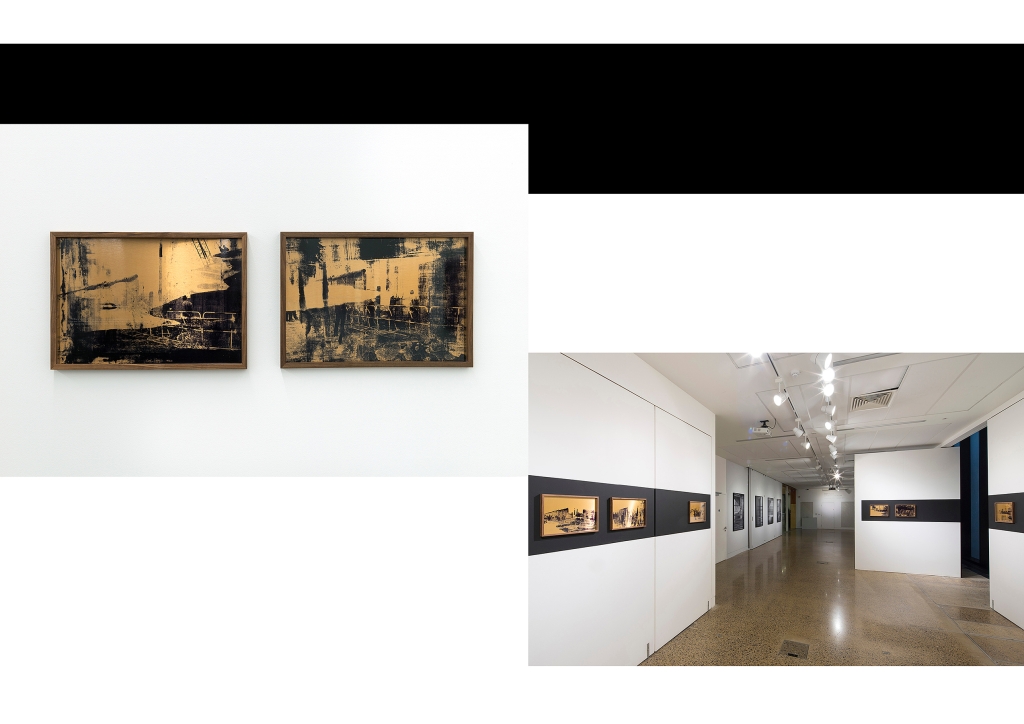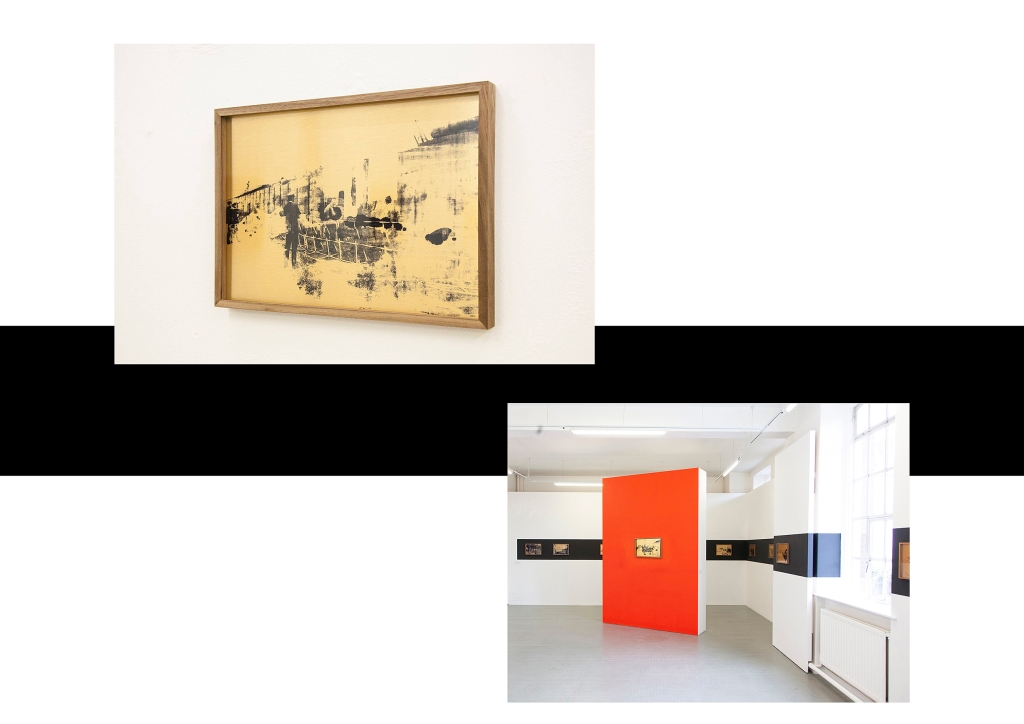He only feels the black and white of it
He only feels the Black and White of it addresses complex issues of individual identity and freedom within the territorial borders of the oppressive and dictatorial political state of former East Germany. The work is based on a 1973 Associated Press photograph of a damaged section of the Berlin Wall. West Germans had attacked the Wall in response to the sound of East German guns fired at fleeing East Germans. The archive image pictures East German military guards and border policemen repairing the Wall.
Over several months, Klenz repeatedly used the archive photograph to make multiple photographic screen-prints on gold-grained aluminium. Due to the repetitive usage of the screen, the photographs become increasingly more smudged, ruptured, disfigured; breaking apart with each further repetition until the images verge on abstraction. This process of continuous repetitive screen-printing, creates fragmented versions of the same image: each image is the space of revelation of particular details so that what is revealed in one image is concealed in another.
The original press-photograph is also the trigger for a series of textual reflections on the artist's own family history around the question of individual identity and freedom mainly through the figure of her father. Due to his political views, he was black-listed - considered politically dangerous - and developed a new persona in order to survive under the East-German government and secret service. The texts highlight the constraints, difficulties, pain and psychological effects that Klenz' father experienced as a young man in former East Germany.
He only feels the black and white of it becomes a metaphor for the disappearance of her fathers own authorial presence, of being heard and not being heard. This body of work suggests that the failure of speech to communicate the truth of political state violence demands new modes of signification, resting in refusal and disorder. Klenz visualises the disappearance of her father's voice through the legibility errors of the photographic reproductive medium, acknowledging her interest in the failure of the photograph as a communicative form. The work itself is a systematic interrogation, methodically exhausting the image, as if the voice gets broken over and over again. Through text and image, He only feels the black and white of it, offers a critical perspective of the poetics of resistance.
